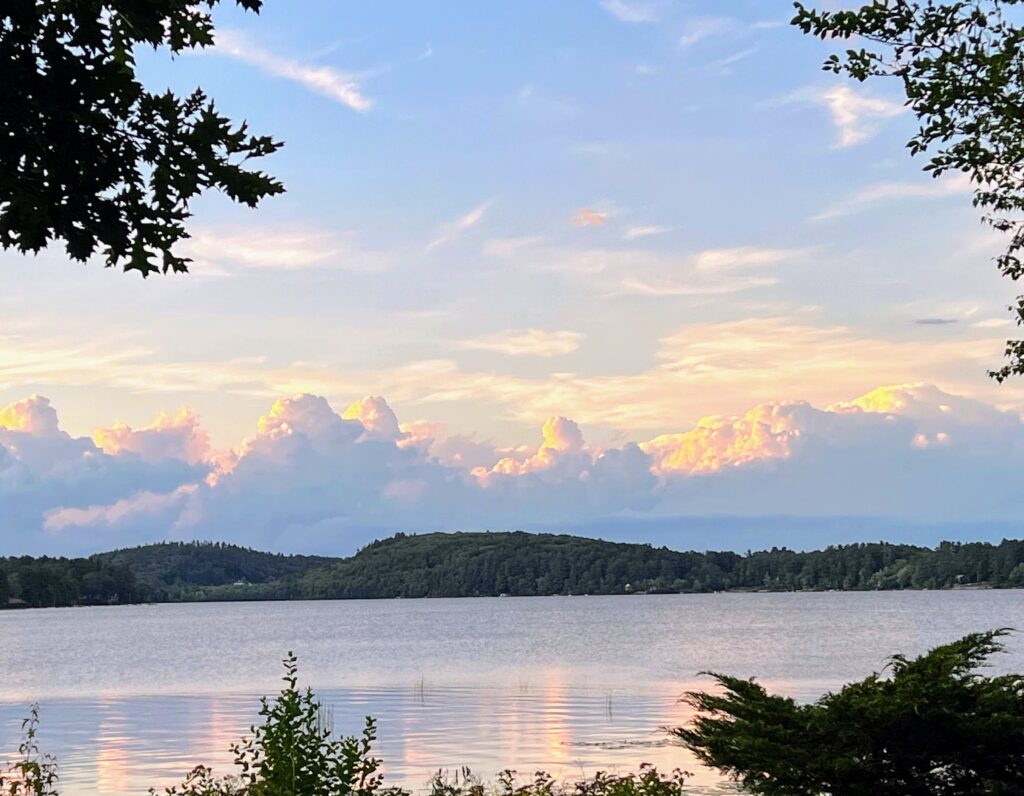Woody Trask
Whereas 2022 was an exceptionally good year for Taylor Pond water quality, 2023 was an exceptionally poor one—especially with regard to color and clarity. The highest clarity reading in 2023 was a depth of 19 feet, more than 5 feet less than 2022’s top reading. The average of all 2023 clarity readings was only 14 feet, more than 6 feet less than 2022’s average of 20.2 feet. Clarity is determined by lowering a black and white disc into the water until it is no longer visible.
The water was also much more highly colored (yellow/brown) in 2023 compared to 2022. The average 2023 color value was 31.25, which was over twice the coloration value in 2022. Low coloration in 2022 was attributed to a year with low precipitation. Similarly, 2023’s high coloration level can be attributed to very heavy rain events with significant particulate transport into the pond. Fortunately, perhaps miraculously, the materials causing the high color and low clarity did not result in high phosphorus concentrations that could have created a serious algae bloom problem.
With so much rain in 2023, the water level of the pond rose to levels that had not been seen in many years, causing concern for bank erosion from wave action and boat wakes. This could only have added to the coloration issue. As many of us experienced, the high water level also caused havoc with dock panels, floats, toys and other things that wandered away from home.
The water temperature in 2023 was slightly colder than it was in 2022. This may have reduced the potential for algae blooms. The average temperature was 72 degrees, 3 degrees lower than 2022 and about 2 degrees colder than the ten-year average. Tests on water samples taken monthly indicated phosphorus levels were only slightly higher than the historical average, somewhat surprising considering the number of rain events causing high coloration. All of the other tests normally conducted to assess water quality — pH, alkalinity and conductance –were all within the normal range of variation from the historic mean and showed no reason for major concern.
A concerning situation that could increase the potential of algae blooms during the summer of 2024 is the very short period of ice cover we experienced this past winter. “Ice In” didn’t occur until January 9th and “ice out” occurred on March 15, giving a total of only 66 days of ice cover, one third less time than the historical average. Since algae needs sunlight as well as phosphorus to grow, fewer days of sun blocking ice cover could mean a higher potential for algae growth. Lake Auburn experienced the same short ice cover period and the water disrict has expressed concern that algae blooms are quite likely to occur this summer as a direct result. If you see what appears to be an algae bloom on Taylor Pond, please report it to a TPA Board member or take a picture and post it on Taylor Pond Ripples so that it can be verified and recorded.
